All products featured are independently chosen by us. However, SoundGuys may receive a commission on orders placed through its retail links. See our ethics statement.
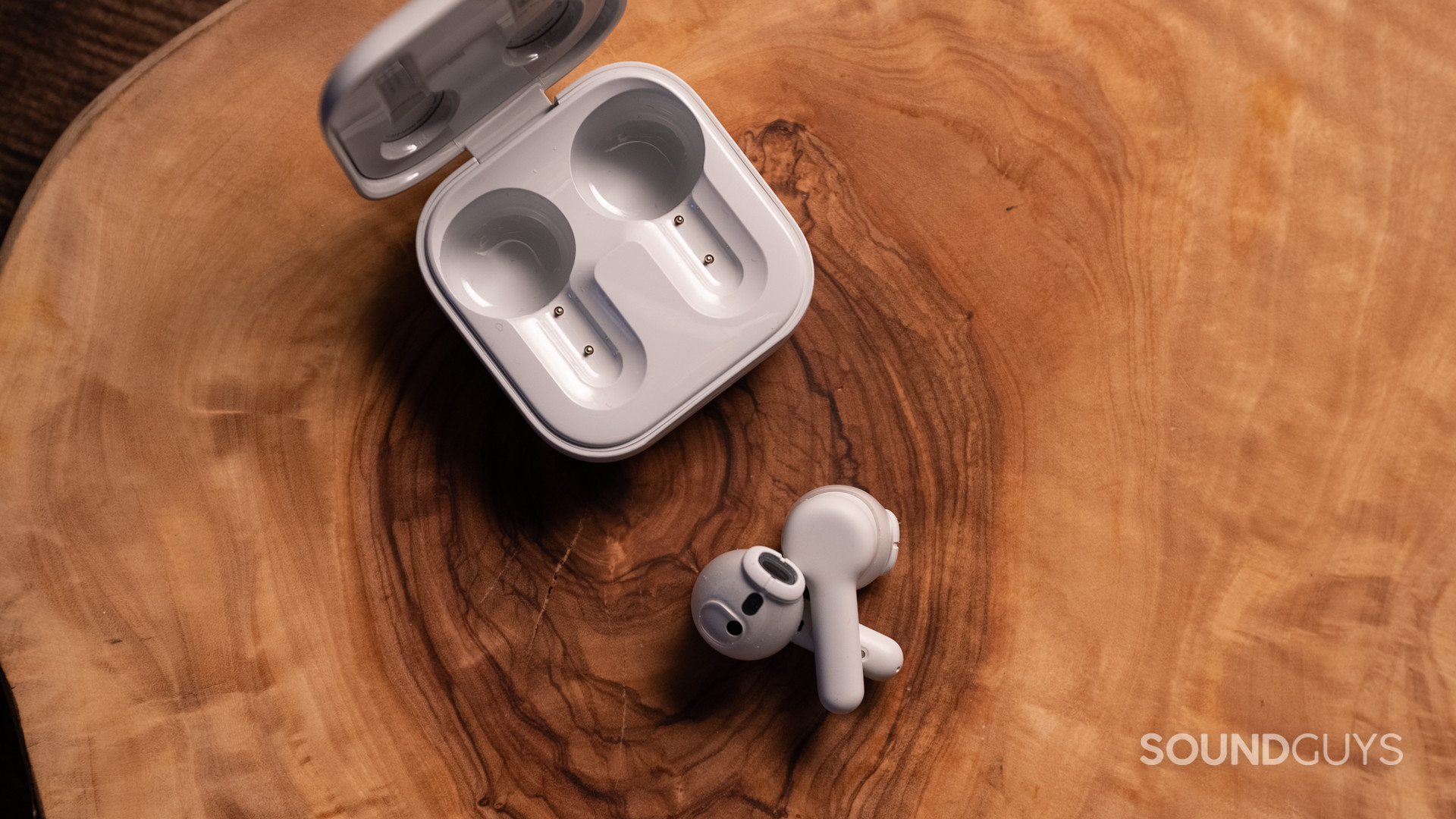
Amazon Echo Buds (2023) review
Published onFebruary 15, 2024
Amazon Echo Buds (2023)
Amazon has been an affordable product mainstay for a while, but its audio hardware hasn’t received much praise. With last year’s Echo Buds debuting at $39.99, are they worth paying attention to? Let’s find out.
Editor’s note: this is the first version of the article. Updates will follow as the market changes.
The Amazon Echo Buds (2023) are for anyone looking to get cheap true wireless earbuds, but not overly concerned about performance.
What’s it like to use the Amazon Echo Buds (2023)?
Using the Amazon Echo Buds (2023) is a mixed bag, but I’ve used worse earbuds. For example, many AirPods imitators using an unsealed design released in the ten years the TWS category has existed were easily a more miserable experience. However, the Amazon Echo Buds (2023) are a bit different. Amazon calls them “semi-in-ear,” meaning they attempt to seal to your ear canal, but they don’t go in it far enough to guarantee the fit an insert earphone should provide. It’s an interesting concept, but one that sounds better in theory than it ends up being in practice.
In my time with the earbuds, I had the same fit issues as with any unsealed buds — even when using the included silicone rubber bits intended to make the fit better. Because of this, I found the “seal” to the ear canal to be pretty fragile. We expect many of you will have extreme difficulty with these staying in your ear.
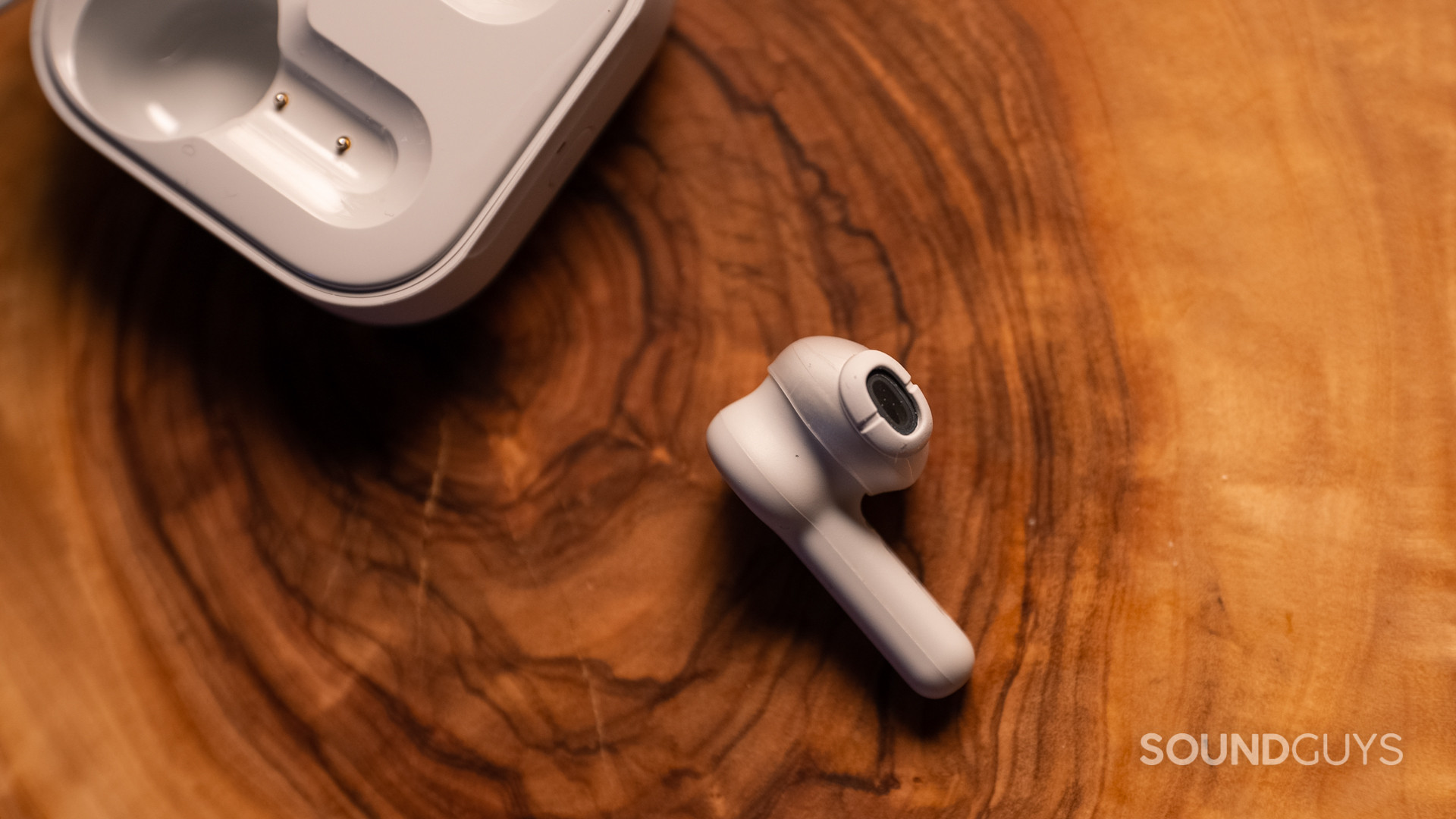
The Amazon Echo Buds (2023) case charges using USB-C. The pairing button on the front is prominent and easy to find — since you’ll likely need to use it every so often. The product doesn’t include a USB-C cable for charging — Amazon claims it’s to support their climate pledge — but it does mean you will have to find a cable when it’s time to charge.
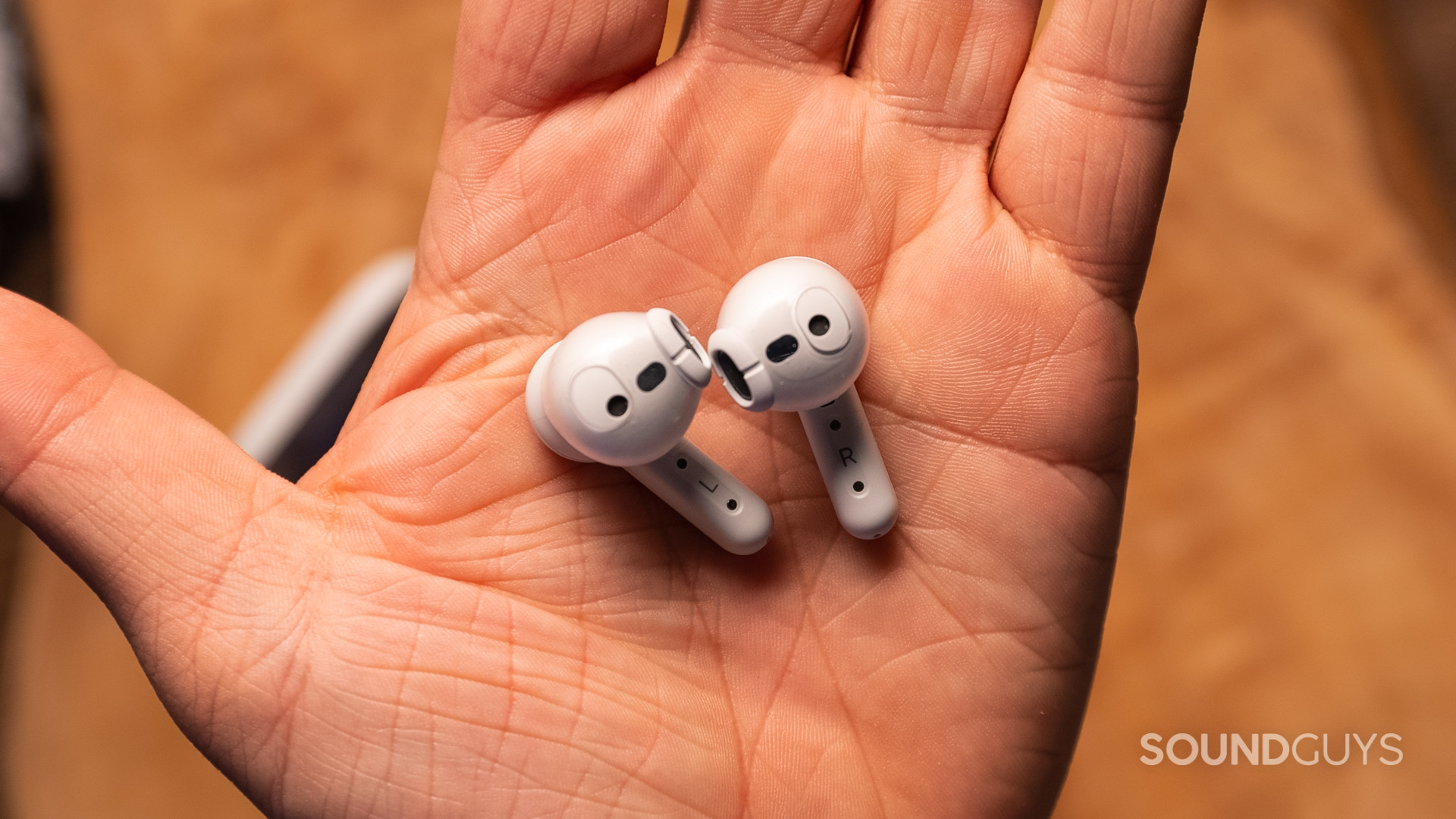
The earbuds have sensors built into the body to determine if you’re wearing them, so they can automatically pause should one be taken out of your ear. There’s also a capacitive touch interface on the back of the stem.
The earbuds are not very resistant to the elements. An IPx2 rating means that these can only handle incidental moisture at an angle of 15 degrees. Waterproof, these are not.
How do you control the Amazon Echo Buds (2023)?
Like many earbuds with capacitive controls on the housing, the Amazon Echo Buds (2023) can be controlled via a series of taps or long presses.
| Input | Action |
|---|---|
Single tap | Play / pause |
Double tap | Track forward / answer call |
Triple tap | Track backward |
Long press | Alexa assistant |
Additionally, you can customize the long press action in the Alexa app to replace the default voice assistant toggle. You can replace it with:
- Toggle Google / Siri
- Volume up / down
- Mute microphones
Should you use the Alexa app for the Amazon Echo Buds (2023)?
If you’d like to take advantage of Amazon integrations like the Alexa assistant, you’ll need to install the Alexa app on your smartphone. However, if you’d like to listen to audio from your source device or computer, an app isn’t going to be necessary. I didn’t find much utility for it, but if you’re in deep with the Amazon product family it may help you to share information or functionality across your smart home devices. If you’re not already in the Amazon ecosystem, you’ll probably not have much benefit from sharing your data with the company.
How do the Amazon Echo Buds (2023) connect?
The Amazon Echo Buds (2023) use Bluetooth 5.2 and connect to your devices via the SBC, AAC, or aptX codecs. Though the inclusion of aptX is a nice touch, you won’t be getting a high-end listening experience out of these earbuds.
As the Amazon Echo Buds (2023) make this straightforward, and you pair them as follows.
- Place buds in the charging case and hold the pair button until the LED breathes blue.
- Enable Bluetooth on your source device and scan.
- Tap the Amazon Echo Buds option to pair.
To the Amazon Echo Buds (2023)’s credit, they support multipoint. So, if you often swap between devices, it’s nice to have the process as streamlined as possible.
How long do the Amazon Echo Buds (2023) battery last?
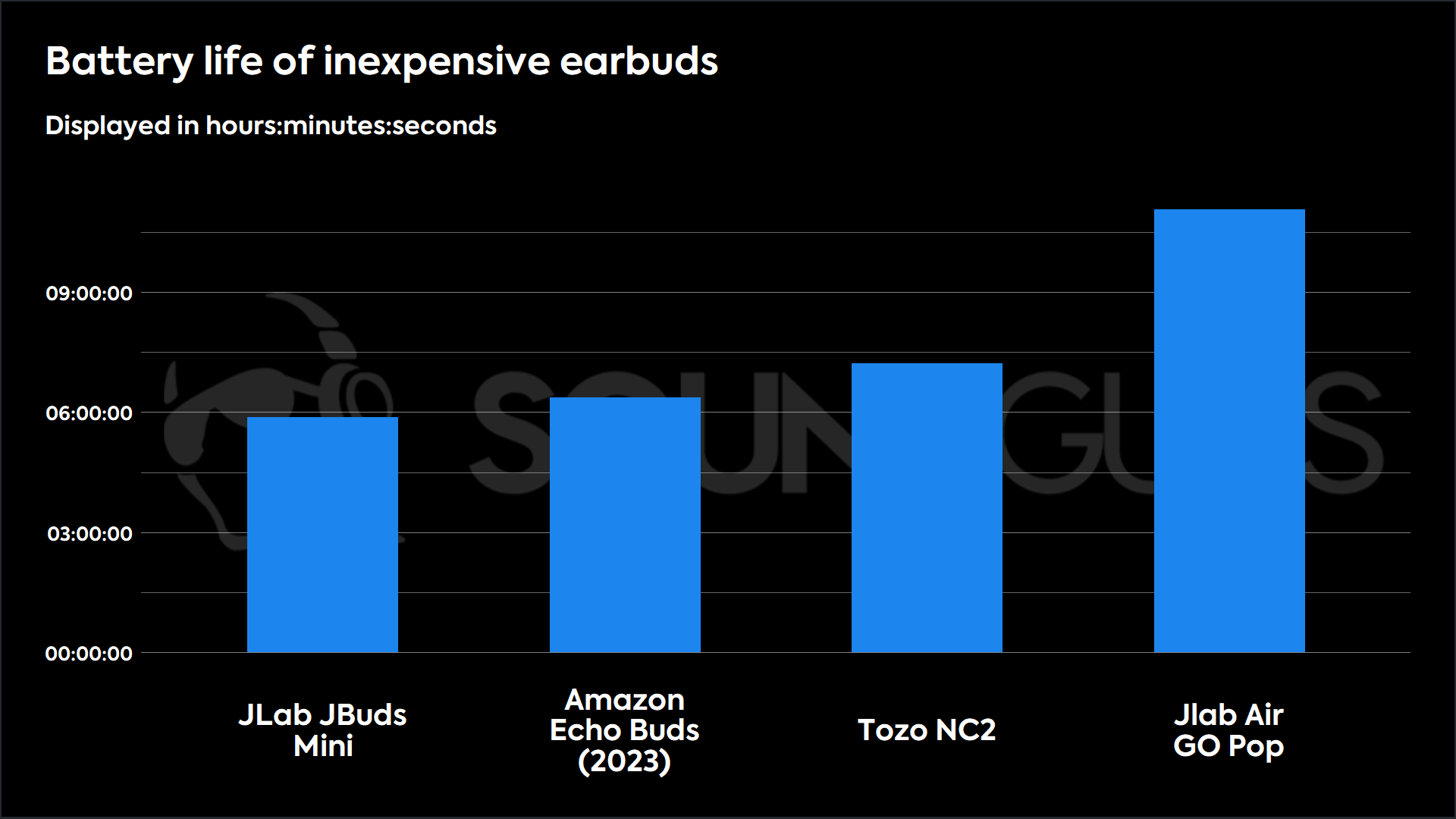
The Amazon Echo Buds (2023) lasted 6 hours and 22 minutes on a single charge in our standardized test. Of course, depending on how you use them, your results will vary.
Amazon claims you can get a 2-hour playback time with 15 minutes of charging.
How well do the Amazon Echo Buds (2023) block out noise?
Loading chart ...
The Amazon Echo Buds (2023) are unsealed earbuds with no active noise canceling (ANC), so don’t expect them to block out much outside noise. Though the earbuds can block up to 20dB in the high frequencies, it’s inconsistent and unreliable in practice, and you won’t enjoy much isolation from low-end noise either.
How do the Amazon Echo Buds (2023) sound?
Like most unsealed earbuds, sound quality is not the Amazon Echo Buds (2023)’s strong suit. However, the news isn’t all bad.
Multi-Dimensional Audio Quality Scores (MDAQS)
The chart below shows how the sound of the Amazon Echo Buds (2023) was assessed by the Multi-Dimensional Audio Quality Score (MDAQS) algorithm from HEAD acoustics.
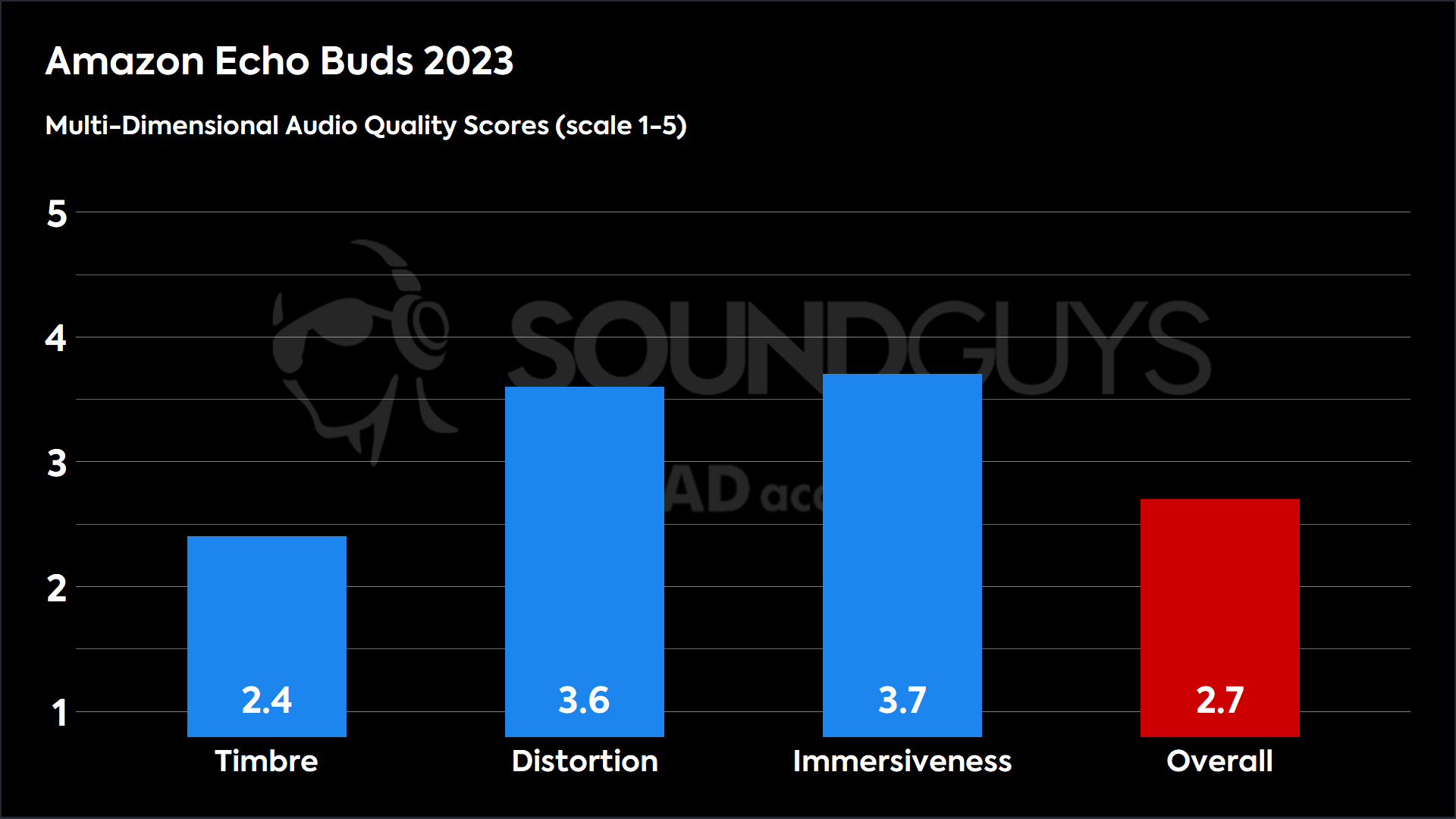
Because the bass is so weak with unsealed earbuds like these, most people will find the experience lacking. It’s no surprise that the timbre score is so low because a lack of bass is just one of those things that can break the experience for most people, and the Amazon Echo Buds (2023) decidedly fall flat here. What’s worse is that you can tell that the Amazon Echo Buds (2023) try to boost it quite a bit, as the earbuds will sound extremely bassy if you attempt to push them into your ears, making all of the lower-frequency content and even mids sound off. Though the earbuds do okay with the presentation of space, it’s not enough to buoy the overall score.
These are poor results, richly earned.
Timbre (MOS-T) represents how faithfully the earbuds reproduce the frequency spectrum and temporal resolution (timing information).
Distortion (MOS-D) represents non-linearities and added noise: higher scores mean cleaner reproduction.
Immersiveness (MOS-I) represents perceived source width and positioning: how well virtual sound sources are defined in three-dimensional space.
See here for an explanation of MDAQS, how it works, and how it was developed.
Reviewer’s notes
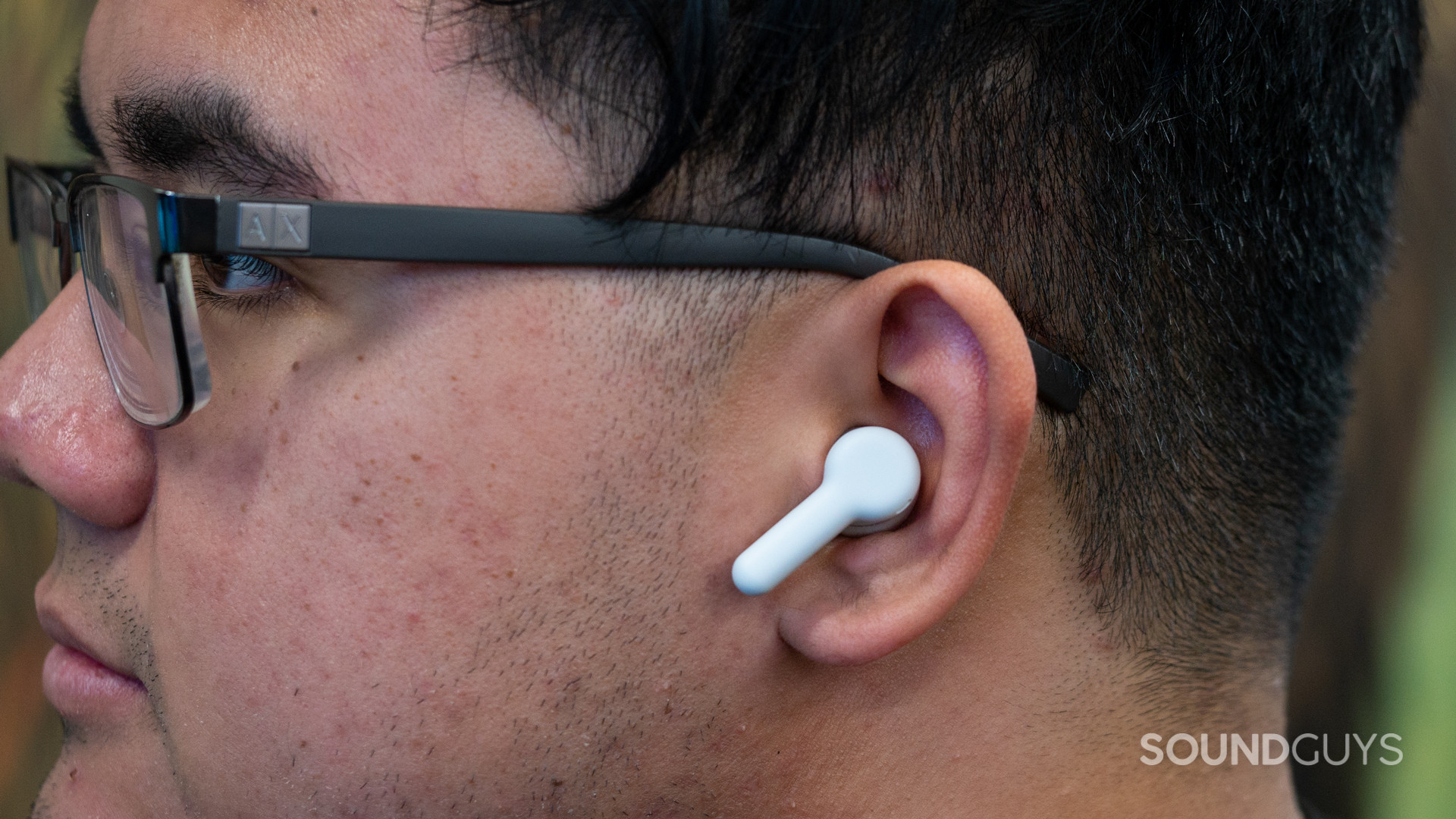
I’m not going to sugarcoat it: I hate these earphones. Not only is the unsealed design the most frustrating to get to fit into my ears, but the sound is dreadful. I honestly can’t think of a good example to highlight this because everything I listened to sounded like it was coming out of a set of lousy car speakers with a crappy sub in the trunk. You might have luck with the three-band equalizer or the sound personalization in the Alexa app, but I sure didn’t.
While I usually can see what manufacturers were going for, even in odd earphone concepts, it’s less obvious here. I wound up pulling these out to ensure no seal was made, but by then, they were so loose in my ears that they would fall out at the slightest twitch.
Objective Measurements
Despite the impression of bass, the unsealed design leads to poor response in this segment of the spectrum due to a compromised fit. The mids and highs might look a little less problematic than the bass does, but the issue is that depending on how your earbuds fit, the bass can be absolutely ridiculously loud or almost nonexistent.
Loading chart ...
If we were to judge these earphones purely on their measurements, I would point out that there is huge underemphasis in the upper mids, where normal headphone responses and our preference curve typically swing upward. This range is essential to get right, and the Amazon Echo Buds (2023) utterly eat dirt when put to the test. This underemphasis leads to unclear music, voices and instruments having a muffled quality, and an overall poor-quality sound.
Can you use the Amazon Echo Buds (2023) for phone calls?
Like any mass-market wireless earbud, you can take phone calls with the Amazon Echo Buds (2023). They perform acceptably well for voice calls and meetings, but you’ll want to check out the sample recordings below to see how different environmental conditions affect the call quality.
Amazon Echo Buds (2023) microphone demo (Ideal conditions):
How does the microphone sound to you?
Amazon Echo Buds (2023) microphone demo (Office conditions):
Amazon Echo Buds (2023) microphone demo (Street conditions):
Amazon Echo Buds (2023) microphone demo (Windy conditions):
Amazon Echo Buds (2023) microphone demo (Reverberant space):
As you can hear above, the Amazon Echo Buds (2023) struggle with wind noise and incidental noise rejection, which is pretty standard in the affordable earbuds category.
Should you buy the Amazon Echo Buds (2023)?
You should probably skip these unless there aren’t many other good options for you at this price point.
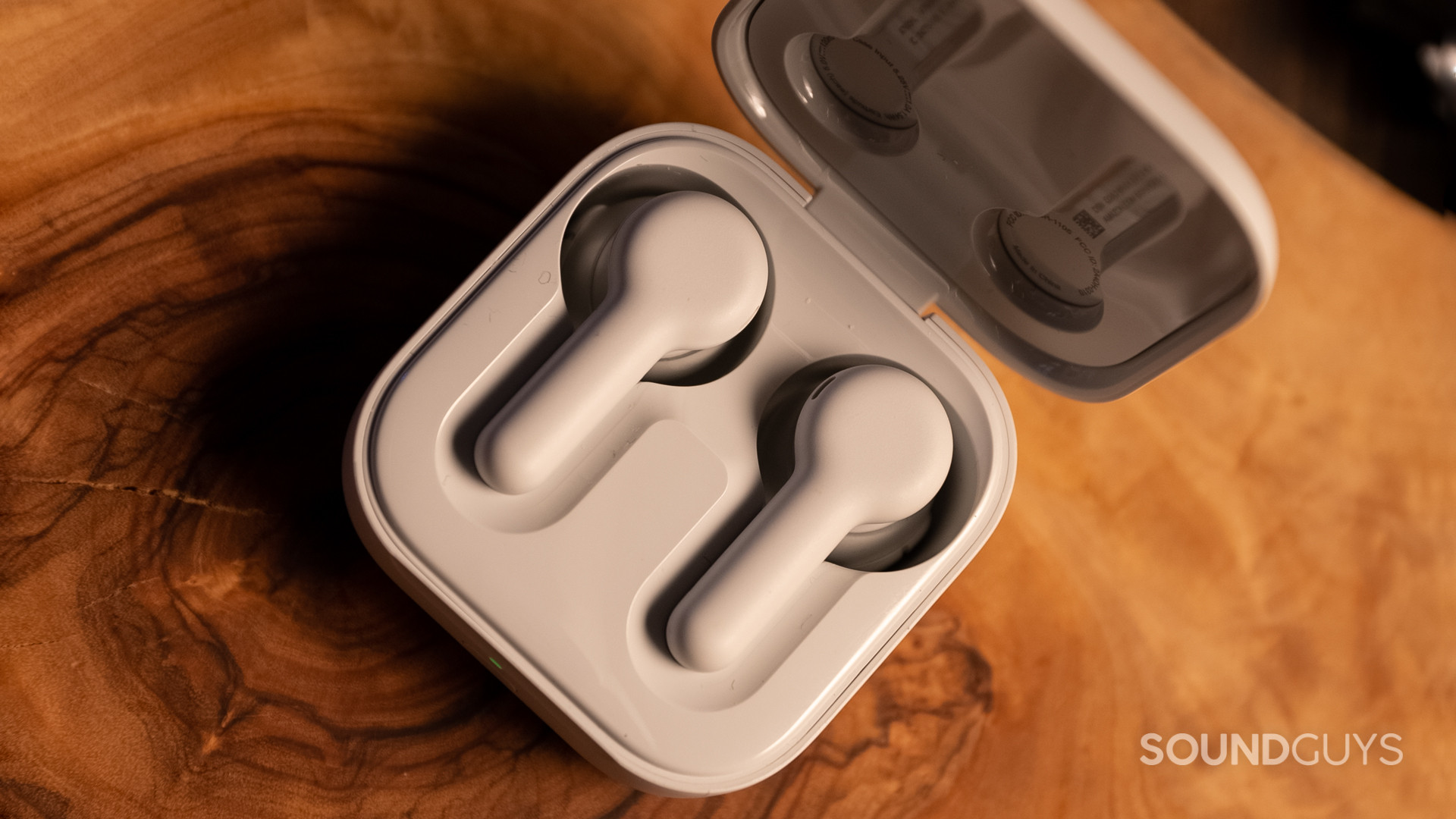
Just skip these. They sound awful, and if you want Amazon integrations, plenty of other devices on the market support Alexa as a voice assistant. Additionally, plenty of other earbuds run circles around the Amazon Echo Buds (2023) in terms of sound quality, battery life, and features. So there’s no reason to give these earbuds the time of day. I understand that $50 might be an attractive price point for many, but if you’re seriously considering the Amazon Echo Buds (2023): do some poking around online to find something better. I assure you, there’s plenty out there.

What should you get instead of the Amazon Echo Buds (2023)?
If you’re reading this because you were considering the Amazon Echo Buds (2023), you should probably check out the JLab JBuds Mini ($39.99 at Amazon) instead. They are the same price as the Amazon Echo Buds (2023) and offer far better sound quality and isolation. They can also be attached to your keyring and are much lighter. If you’re not wild about the mini form factor, JLab also makes the Go AIR Pop ($24 at Amazon), which are very similar to the mini buds — just larger.
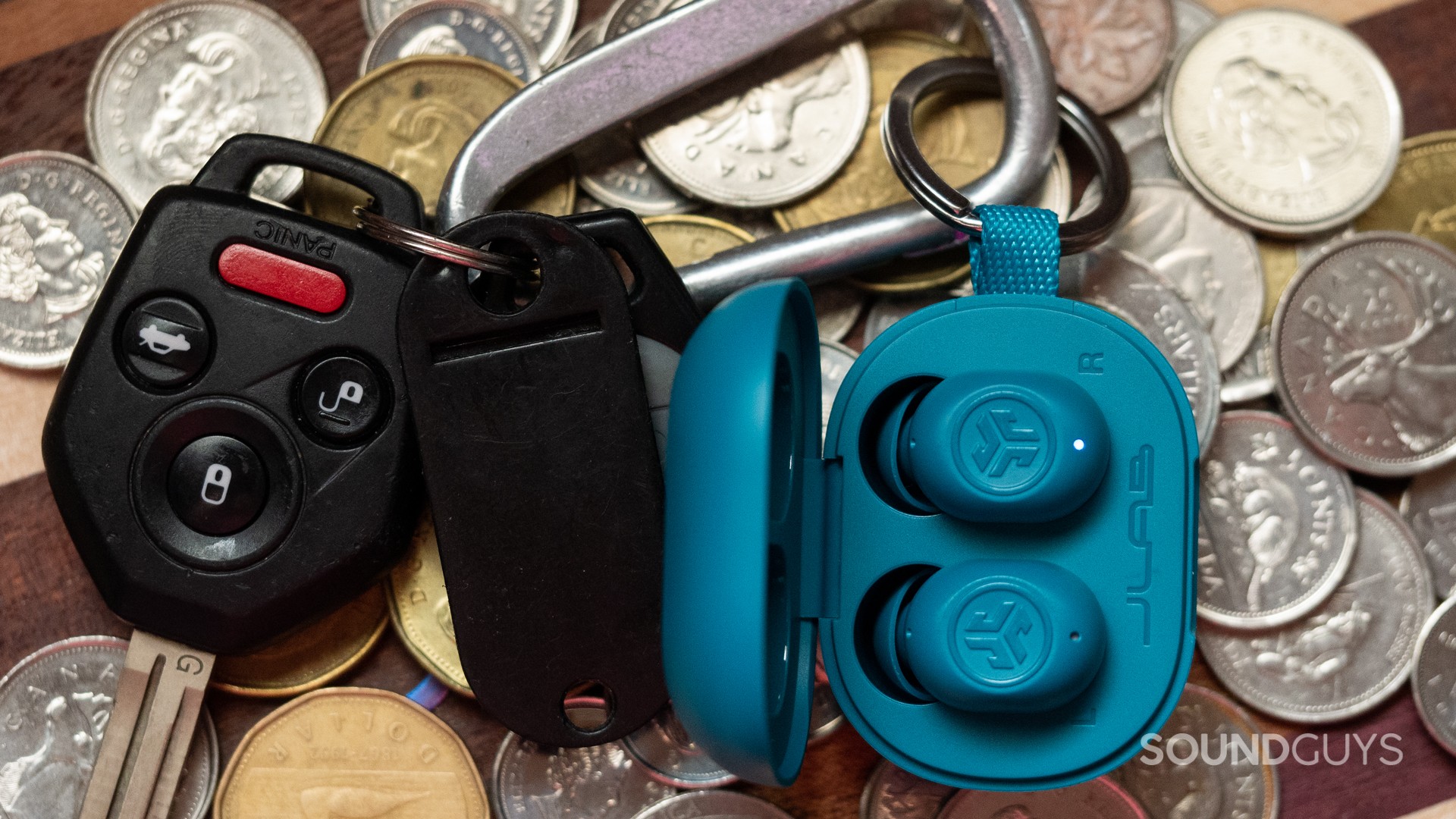
Alternatively, you could also seek out the Tozo NC2 ($39 at Amazon) for a set of ANC earbuds that come in at about the same price. However, we’re bigger fans of the Anker Soundcore Life A1 ($49 at Amazon). Not only are they about the same price as the Amazon Echo Buds, but they’re also much better performers.
Frequently asked questions
They are rated IPx2, meaning they can occasionally take indirect moisture. Not waterproof.
You’re joking, right?
No.
Yes.